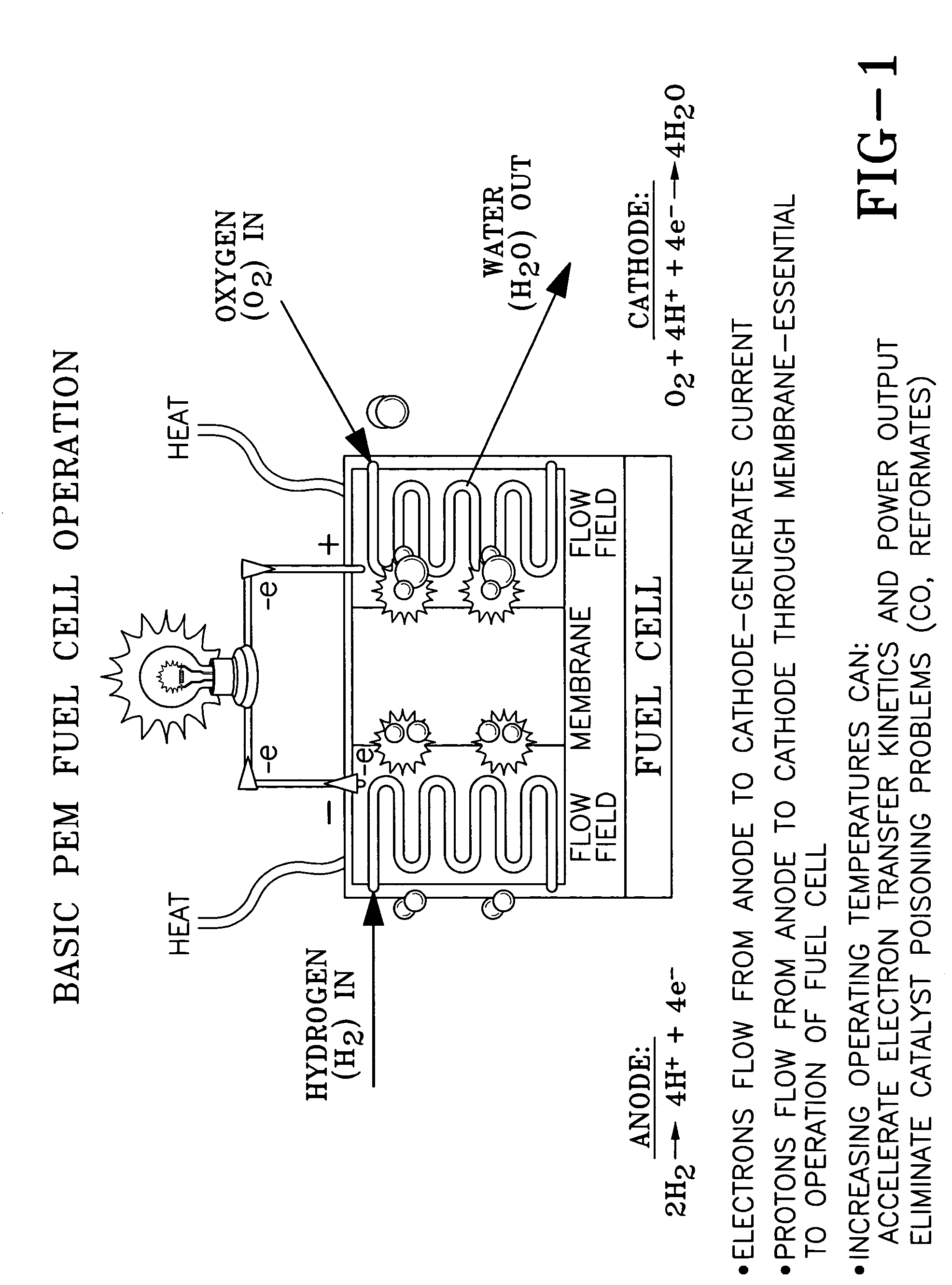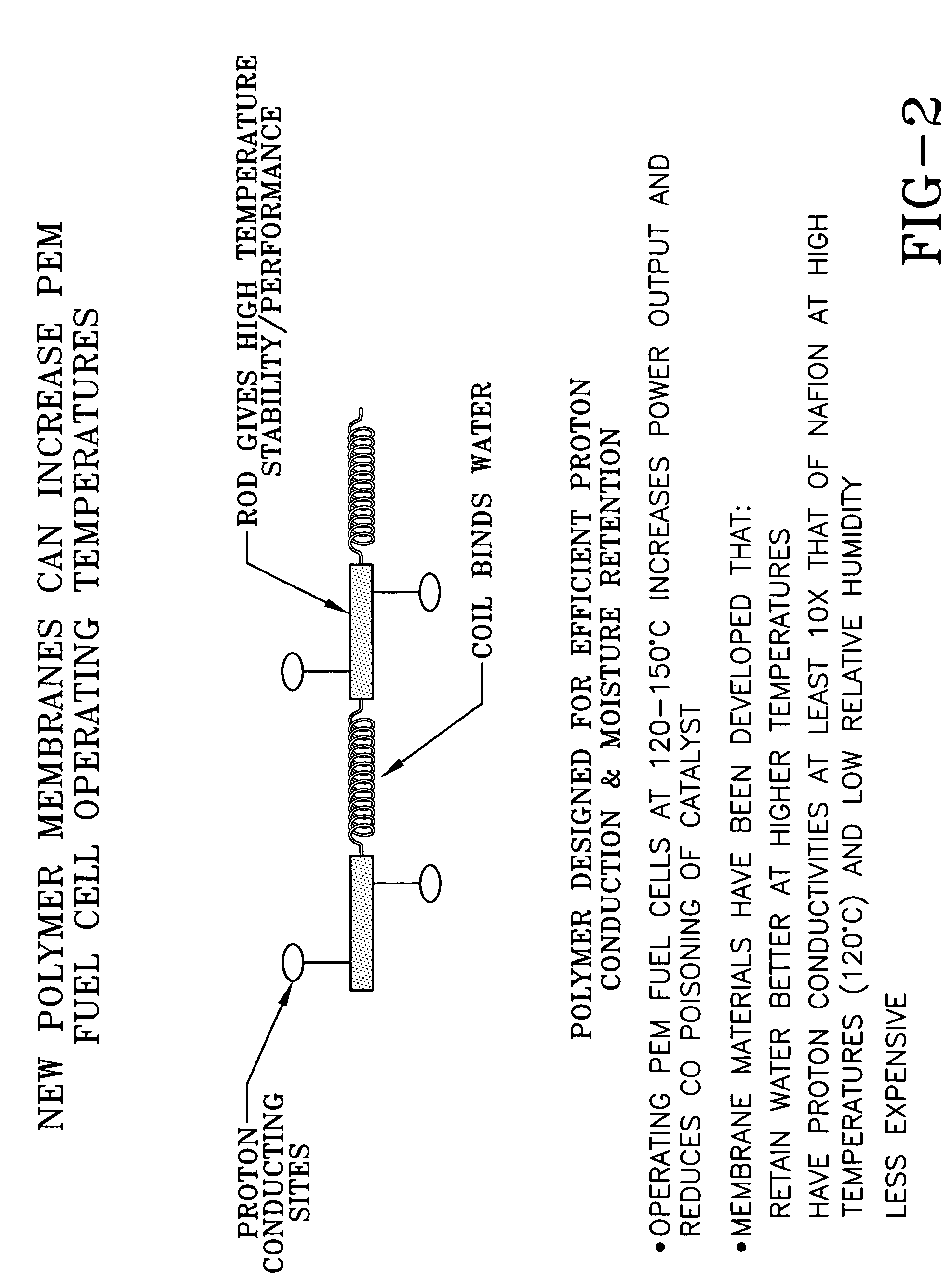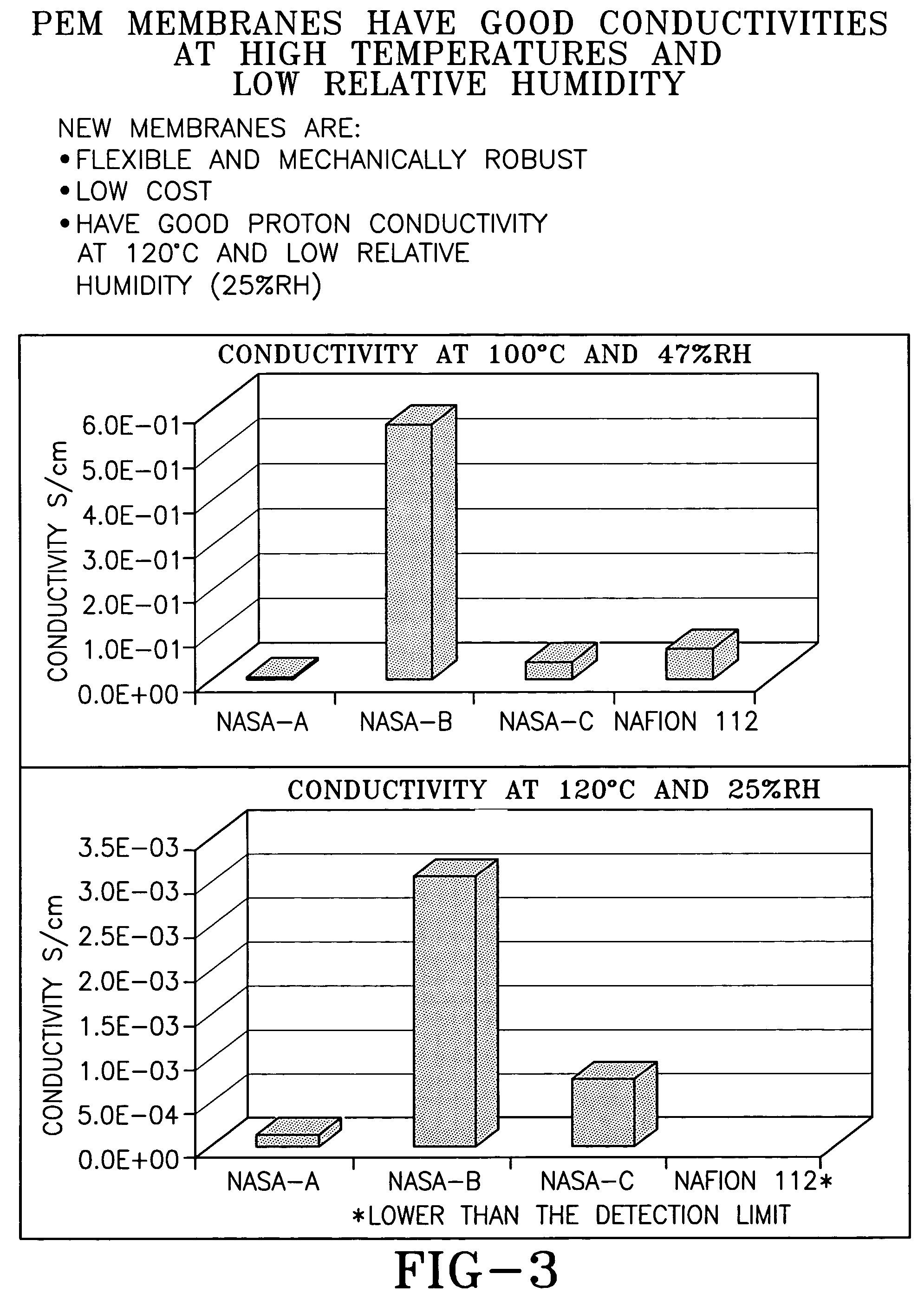Ion conducting organic/inorganic hybrid polymers
a hybrid polymer and organic technology, applied in the field of organic/inorganic hybrid polymers, can solve the problems of affecting the performance of the system, affecting the stability of the system, and the loss of the effect of the membrane, and achieves the effects of high ionic conductivity, high mechanical strength, and chemical stability
- Summary
- Abstract
- Description
- Claims
- Application Information
AI Technical Summary
Benefits of technology
Problems solved by technology
Method used
Image
Examples
example 1
[0024]10.3870 g of 2000 MW PEO diamine (2000 DA), 2.45 g of 3-Glycidoxypropyl-trimethoxysilane (GLYMO) and 50 ml of dry NMP were combined in a 3 neck flask equipped with a reflux condenser. The flask was heated to 180° C. under nitrogen for 4.5 hours. The NMP was removed under reduced pressure and 50 ml of THF and 2.24 g of H2O was added to the GLYMO-2000 DA monomer. The reaction was stirred for 30 min and then poured into 25 ml Teflon pans. The pans were partially covered and left in a fume hood for 24 hours. The remaining solvent was removed by heating to 160° C. for 5 hrs. under reduced pressure in a vacuum oven.
[0025]The organic solvents useful in the reaction for preparing the hybrid polymers include, for example, N,N-dimethylformamide, N,N-dimethylacetamide, tetrahydrofuran (THF), N-methyl-2-pyrrolidinone (NMP), N,N-diethylacetamide, N,N-dimethylmethoxyacetamide, N-methyl-2-pyrrolidone, bis(2-methoxyethyl)ether, tetrahydrofuran, 1,3-dioxane, pyridine, dimethyl sulfoxide, dimet...
example 2
[0042]The synthesis of 60 / 40 DAS began with the addition of 3-glycidoxypropyltrimethoxysilane (Glymo, Aldrich, 98%) to 2000 molecular weight (MW) Jeffamine (Huntsman XTJ-502) and 4,4′-diamino-2,2′-biphenyldisulfonic acid (DAS, Aldrich) in a molar ratio of 2:1, Glymo:(2000 MW Jeffamine+DAS). In addition, triethylamine (NEt3, Aldrich 99.5%) was added in a molar ratio of 2.1:1, NEt3:DAS. The molar percentage of DAS is determined by (mol DAS) / (mol DAS+ mol 2000 MW Jeffamine)×100%. The solution stirred in 50 ml N-methylpyrrolidone (NMP) (Aldrich, 99.5%) at 180° C. for 4.5-8 hours. Upon completion, the solvent was removed by evaporation under pressure. The remaining solution was diluted with approximately 5 ml tetrahydrofuran (THF) and water, 3:1 molar ratio water:silane. The 60 / 40 DAS / Jeffamine solution was then poured onto plates and allowed to dry under ventilation hoods. Curing of the films were done the following day in a vacuum oven set at 160° C. under a slight vacuum (approximatel...
example 3
[0047]The synthesis of lithium containing polymer began with the addition of 3-glycidoxypropyltrimethoxysilane (GLYMO) to 2000 molecular weight (MW) polyether diamine in a molar ratio of 2:1 Glymo:2000 MW PEO. The solution stirred in 50 ml N-methylpyrrolidone (NMP) at 180° C. for 4.5-8 hours. Upon completion, the solvent was removed by evaporation under pressure. The remaining solution was diluted with approximately 5 ml tetrahydrofuran (THF) and water, 3:1 molar ratio water:silane.
[0048]Lithium trifluoromethane-sulfonimide (Li salt, Aldrich, 99.95%) was added in a 20:1 ether oxygen to lithium molar ratio. An additional 2 ml THF was used to dissolve the Li salt and the resulting solution was added to the Glymo 2000 solution. The Glymo 2000-Li was then poured onto plates and allowed to dry under ventilation hoods. Curing of the films were done the following day in a vacuum oven set at 160° C. under a slight vacuum (approximately 10 in Hg) for 3-4 hours. A full vacuum was pulled for t...
PUM
| Property | Measurement | Unit |
|---|---|---|
| molar ratio | aaaaa | aaaaa |
| operating temperature | aaaaa | aaaaa |
| lithium conductivity | aaaaa | aaaaa |
Abstract
Description
Claims
Application Information
 Login to View More
Login to View More - R&D Engineer
- R&D Manager
- IP Professional
- Industry Leading Data Capabilities
- Powerful AI technology
- Patent DNA Extraction
Browse by: Latest US Patents, China's latest patents, Technical Efficacy Thesaurus, Application Domain, Technology Topic, Popular Technical Reports.
© 2024 PatSnap. All rights reserved.Legal|Privacy policy|Modern Slavery Act Transparency Statement|Sitemap|About US| Contact US: help@patsnap.com










